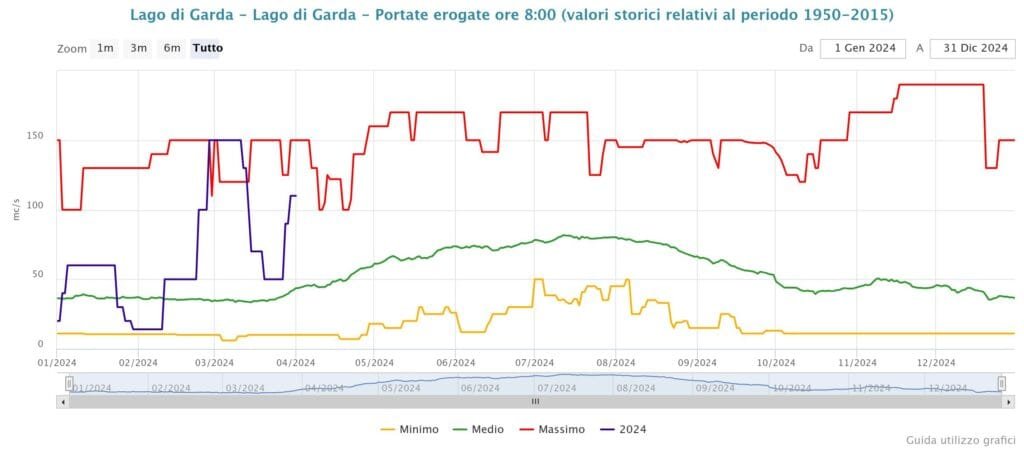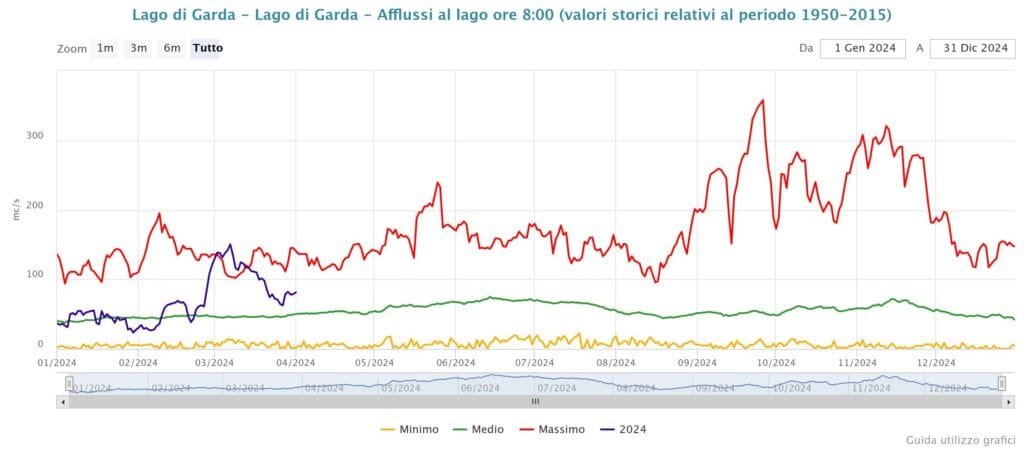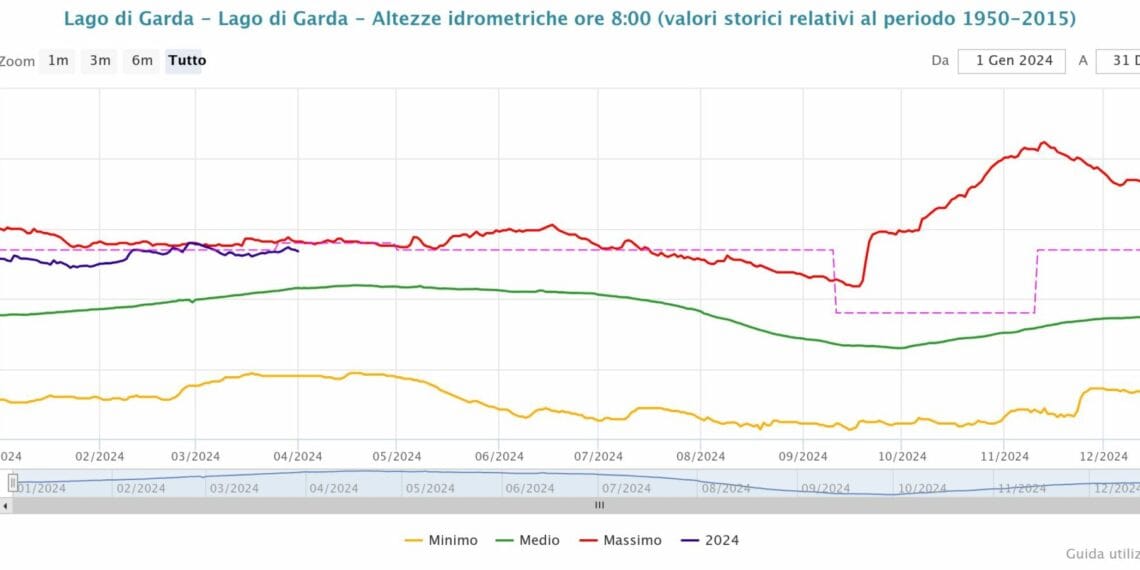Articoli Twitter
Il livello del Lago di Garda mostra valori idrometrici superiori alla media, stabili intorno ai 135 cm, 30 cm sopra la norma stagionale, dopo picchi di oltre 140 cm. La gestione dei deflussi bilancia l’afflusso maggiore, con la regolazione della diga di Salionze. Questo elevato livello idrico offre benefici come navigazione agevolata e riserva idrica, ma comporta rischi di esondazioni. La situazione attuale riflette un equilibrio tra preservazione ambientale e utilizzo delle risorse idriche.
The water levels of Lake Garda continue to show higher than average hydrological values, a condition that deserves attention due to the various aspects it entails. After reaching a peak at the end of February, with heights exceeding 140 cm, the measurements have stabilized around 135 cm, about 30 cm above the seasonal norm, but still lower than the maximum peaks recorded.
The current conditions of the lake are the result of careful management of the outflows. As highlighted by recent graphs, there has been an increase in outflows to balance the increased inflow, especially following the return of intense atmospheric disturbances. This regulation is crucial: with every increase in inflows, mainly due to natural events, there is a prompt response through the opening or closing of the Salionze dam. This practice ensures a water balance, avoiding too abrupt fluctuations in the lake levels.

Problems and Advantages of This Condition
Despite the levels being below the maximum records, Lake Garda remains significantly fuller than average. This state brings both advantages and disadvantages. Among the negative factors is the risk of flooding, particularly in the lower coastal areas. On the other hand, a high water level facilitates navigation and provides a valuable water reserve in anticipation of any periods of drought, a phenomenon not uncommon in recent years.
Therefore, the situation of Lake Garda represents a delicate balance between the needs of environmental preservation and the practical requirements associated with the use of its water resources.



